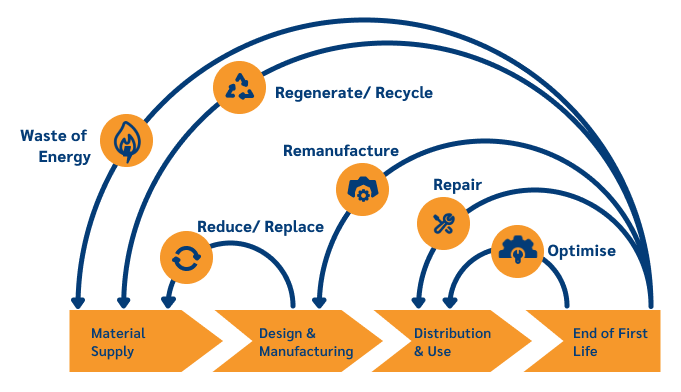“Preserve value in the form of energy, labour, and materials, by designing for durability, reuse, remanufacturing and recycling to keep products, components, and materials circulating in the economy”
Circular Economy Certification
Sustainable development requires disruptive changes in the way our societies and businesses are organized. The circular economy (CE) model offers a new chance of innovation and integration between natural ecosystems, businesses, our daily lives, and waste management. Find out below the definition, meaning, principles, advantages, and barriers to a circular economy model.
In the linear economy, raw natural resources are taken, transformed into products and get disposed of. On the opposite, a circular economy model aims to close the gap between the production and the natural ecosystems’ cycles – on which humans ultimately depend upon.
This means, on one hand, eliminating waste – composting biodegradable waste or, if it’s a transformed and non-biodegradable waste, reusing, remanufacturing and finally recycling it. On the other hand, it also means cutting off the use of chemical substances (a way to help regenerate natural systems) and betting on renewable energy.
“A circular economy is an industrial system that is restorative or regenerative by intention and design. It replaces the end-of-life concept with restoration, shifts towards the use of renewable energy, eliminates the use of toxic chemicals, which impair reuse and return to the biosphere, and aims for the elimination of waste through the superior design of materials, products, systems, and business models. ”


Benefits of
Circular Economy
- Fewer Greenhouse Gas Emissions
- Healthy And Resilient Soils
- Fewer Negative Externalities
- Increased Potential For Economic Growth
- More Resources Saved
- Employment Growth
- New Profit Opportunities
- Volatility Reduction And Safeguarded Supplies
- The Demand For New Services
- Getting To Know Clients Better
We offer consulting services
for the following certifications
- ISCC & ISCC PLUS
- GRS
- CEFLEX

Our Expertise

Experience

Expertise

Positive Reviews

Consulting

